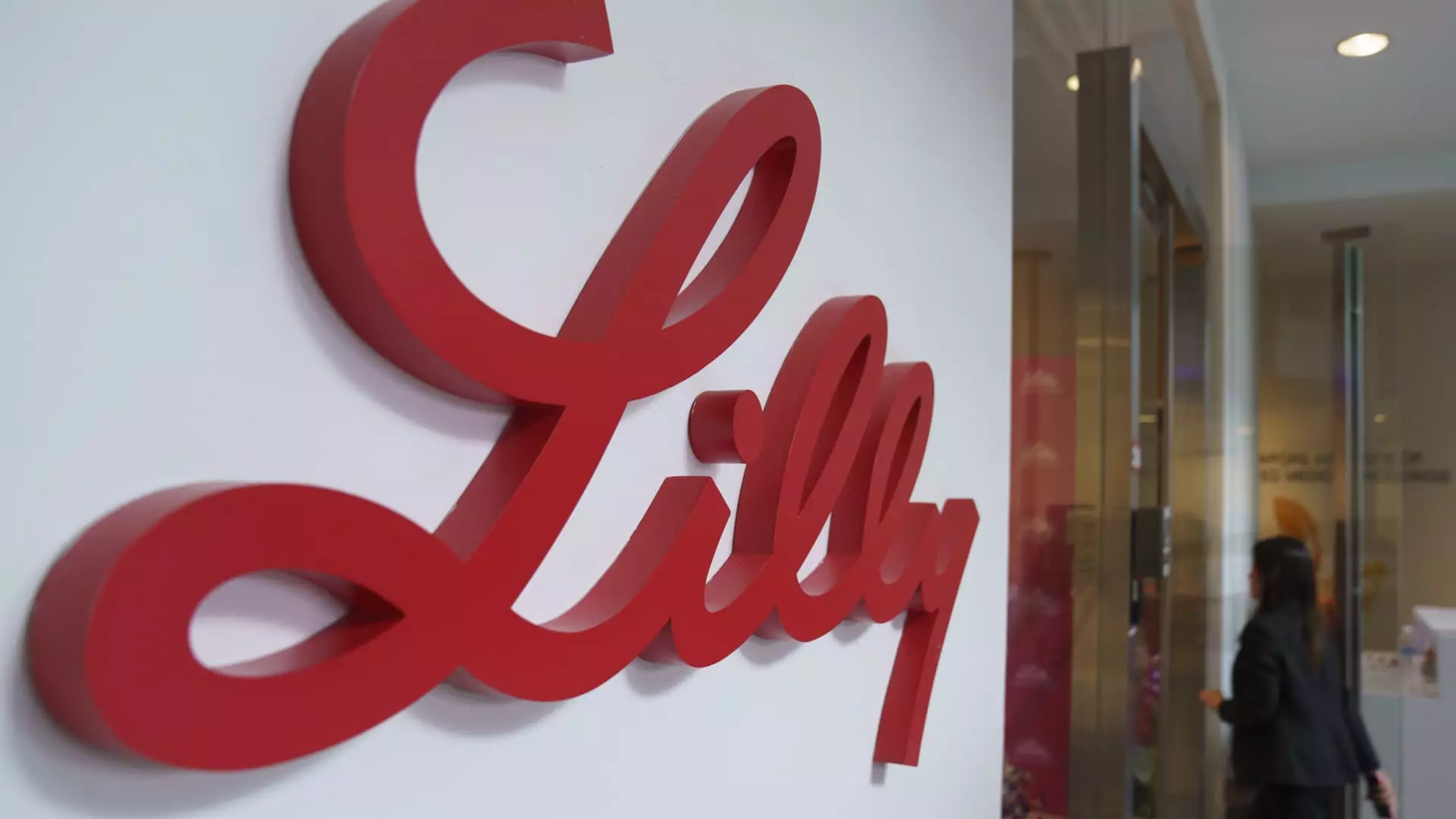Eli Lilly has recently become a focal point in the pharmaceutical industry, boasting remarkable earnings and revenue growth while simultaneously adjusting its profit forecasts downward thanks to unexpected costs linked to a bold acquisition. Despite its financial ascendancy, the company finds itself embroiled in a complex web of market uncertainties, strategic decisions, and evolving economic landscapes. For a company that has witnessed a staggering surge in demand for its diabetes and weight loss drugs, notably Mounjaro and Zepbound, the intricate dance of operational triumphs and setbacks is telling of a larger narrative in the healthcare sector.
While Eli Lilly reported a 45% increase in revenue to $12.73 billion—a figure that beat Wall Street expectations—the shocking $1.57 billion charge stemming from its recent acquisition of a cancer treatment significantly altered its profit outlook. This juxtaposition of soaring revenues laced with cautionary tales of future profitability presents a stark illustration of how unpredictable the pharmaceutical landscape can be, especially when influenced by acquisitions and external economic pressures.
Unpacking the Weight Loss Phenomenon
The meteoric rise of Mounjaro, which raked in an impressive $3.84 billion and saw a 113% increase in sales year-over-year, underscores a transformative moment not just for Eli Lilly but for the pharmaceutical industry at large. Patients and healthcare practitioners alike are increasingly gravitating toward these innovative treatment options for diabetes and obesity, marking a shift in how chronic health conditions are approached.
However, as much as this success story is one to celebrate, it brings into focus a critical issue—market supply and demand. The overwhelming enthusiasm for Zepbound and Mounjaro overshadowed a supply chain unable to keep up with the burgeoning interest. As Eli Lilly aggressively ramps up its manufacturing capabilities, the constraints of production will dictate whether the company can sustain its impressive growth trajectory. Should the demand keep escalating without a corresponding increase in supply, Eli Lilly risks not just disappointing customers but potentially damaging its brand reputation.
The Tariff Dilemma: Navigating Economic Waters
Eli Lilly’s CEO, Dave Ricks, opened an intriguing window into the company’s strategic outlook during an interview with CNBC, discussing the impact of President Donald Trump’s tariffs. While Ricks hinted at the potential for increased U.S. manufacturing investments—a goal driven by the tariffs—he cast doubt on the necessity of such trade barriers. This ambivalence illuminates a larger conversation around tariffs that can either empower domestic industries or create unforeseen obstacles that stifle growth.
It raises essential questions about whether policymakers fully grasp the repercussions of their economic initiatives. The wish for lower corporate tax rates could be a potential boon for the industry, enticing major pharmaceutical firms to shift their production back to the U.S. As of now, Eli Lilly seems to be hinting at a desire for a more conducive economic environment, reflecting the delicate balance between regulation and market-driven growth.
Investment Strategies and Market Sentiment
Despite the revenue growth and optimistic projections regarding future sales in the context of diabetes and weight loss treatment, Eli Lilly’s stock suffered a blow, plummeting by approximately 5% in pre-market trading. This market reaction in the wake of its profit guidance revision speaks volumes. It reveals how investors are increasingly wary of unexpected costs and burdens, even in the face of what seems to be unrelenting revenue growth.
As the market for incretin treatments continues to expand, Eli Lilly and its competitors must navigate an ecosystem where pricing pressures and regulatory hurdles could easily stymie innovation. The concern among investors also emphasizes a crucial point—companies must manage not only profits but perceptions. The landscape is changing rapidly, and a single misstep can generate a whirlwind of speculation that might lead to disproportionate stock fluctuations.
The Pharmaceutical Tug-of-War
The ongoing battle between Eli Lilly and its rivals illustrates the paradoxical nature of the pharmaceutical industry. Even as Eli Lilly leads with groundbreaking treatments that provide hope and tangible benefits to millions of people, it remains vulnerable to fierce competition and market dynamics that are far from stable. The aggressive nature of the healthcare market—including marketing, talent acquisition, and production capacity—now dictates that success isn’t merely about innovation; it also involves assimilating those innovations into a larger framework of agile corporate management.
As we anticipate Eli Lilly’s next moves, one can’t overlook the pressing importance of both strategic foresight and adaptability. In a landscape fraught with volatility, Eli Lilly stands as a case study reminding us that even while profits soar, the ground beneath can shift precariously beneath our feet. The future—bright yet uncertain—will require a nimble approach, and the pharmaceutical giant is under the spotlight like never before.

